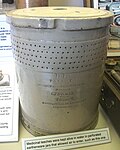Hirudo medicinalis
Hirudo medicinalis is a species of leech, known as the medicinal leech, that is found in Europe and Asia. It is best known for its historical use in medicine for bloodletting.
Description
The medicinal leech, Hirudo medicinalis, is a large freshwater leech that can grow up to 20 cm in length. It has a dark green or brown body with a lighter underside and six red stripes along its back. The leech has two suckers, one at each end, which it uses for movement and feeding.
Habitat
Hirudo medicinalis is found in freshwater habitats such as ponds, marshes, and slow-moving streams. It prefers habitats with plenty of vegetation and muddy bottoms where it can hide from predators.
Diet
The medicinal leech feeds on the blood of vertebrates, including humans. It uses its suckers to attach to the skin of its host and then cuts through the skin with its sharp jaws. The leech then injects an anticoagulant into the wound to prevent the blood from clotting while it feeds.
Medical use
In the past, Hirudo medicinalis was widely used in medicine for bloodletting, a practice believed to balance the body's "humors" and cure a variety of ailments. Today, medicinal leeches are still used in some areas of medicine, such as plastic and reconstructive surgery, to help reduce swelling and improve circulation.
Conservation status
Hirudo medicinalis is listed as Near Threatened on the IUCN Red List due to habitat loss and over-collection for medical use.
See also
References
Transform your life with W8MD's budget GLP-1 injections from $125.
W8MD offers a medical weight loss program to lose weight in Philadelphia. Our physician-supervised medical weight loss provides:
- Most insurances accepted or discounted self-pay rates. We will obtain insurance prior authorizations if needed.
- Generic GLP1 weight loss injections from $125 for the starting dose.
- Also offer prescription weight loss medications including Phentermine, Qsymia, Diethylpropion, Contrave etc.
NYC weight loss doctor appointments
Start your NYC weight loss journey today at our NYC medical weight loss and Philadelphia medical weight loss clinics.
- Call 718-946-5500 to lose weight in NYC or for medical weight loss in Philadelphia 215-676-2334.
- Tags:NYC medical weight loss, Philadelphia lose weight Zepbound NYC, Budget GLP1 weight loss injections, Wegovy Philadelphia, Wegovy NYC, Philadelphia medical weight loss, Brookly weight loss and Wegovy NYC
|
WikiMD's Wellness Encyclopedia |
| Let Food Be Thy Medicine Medicine Thy Food - Hippocrates |
Medical Disclaimer: WikiMD is not a substitute for professional medical advice. The information on WikiMD is provided as an information resource only, may be incorrect, outdated or misleading, and is not to be used or relied on for any diagnostic or treatment purposes. Please consult your health care provider before making any healthcare decisions or for guidance about a specific medical condition. WikiMD expressly disclaims responsibility, and shall have no liability, for any damages, loss, injury, or liability whatsoever suffered as a result of your reliance on the information contained in this site. By visiting this site you agree to the foregoing terms and conditions, which may from time to time be changed or supplemented by WikiMD. If you do not agree to the foregoing terms and conditions, you should not enter or use this site. See full disclaimer.
Credits:Most images are courtesy of Wikimedia commons, and templates, categories Wikipedia, licensed under CC BY SA or similar.
Translate this page: - East Asian
中文,
日本,
한국어,
South Asian
हिन्दी,
தமிழ்,
తెలుగు,
Urdu,
ಕನ್ನಡ,
Southeast Asian
Indonesian,
Vietnamese,
Thai,
မြန်မာဘာသာ,
বাংলা
European
español,
Deutsch,
français,
Greek,
português do Brasil,
polski,
română,
русский,
Nederlands,
norsk,
svenska,
suomi,
Italian
Middle Eastern & African
عربى,
Turkish,
Persian,
Hebrew,
Afrikaans,
isiZulu,
Kiswahili,
Other
Bulgarian,
Hungarian,
Czech,
Swedish,
മലയാളം,
मराठी,
ਪੰਜਾਬੀ,
ગુજરાતી,
Portuguese,
Ukrainian
Contributors: Prab R. Tumpati, MD




